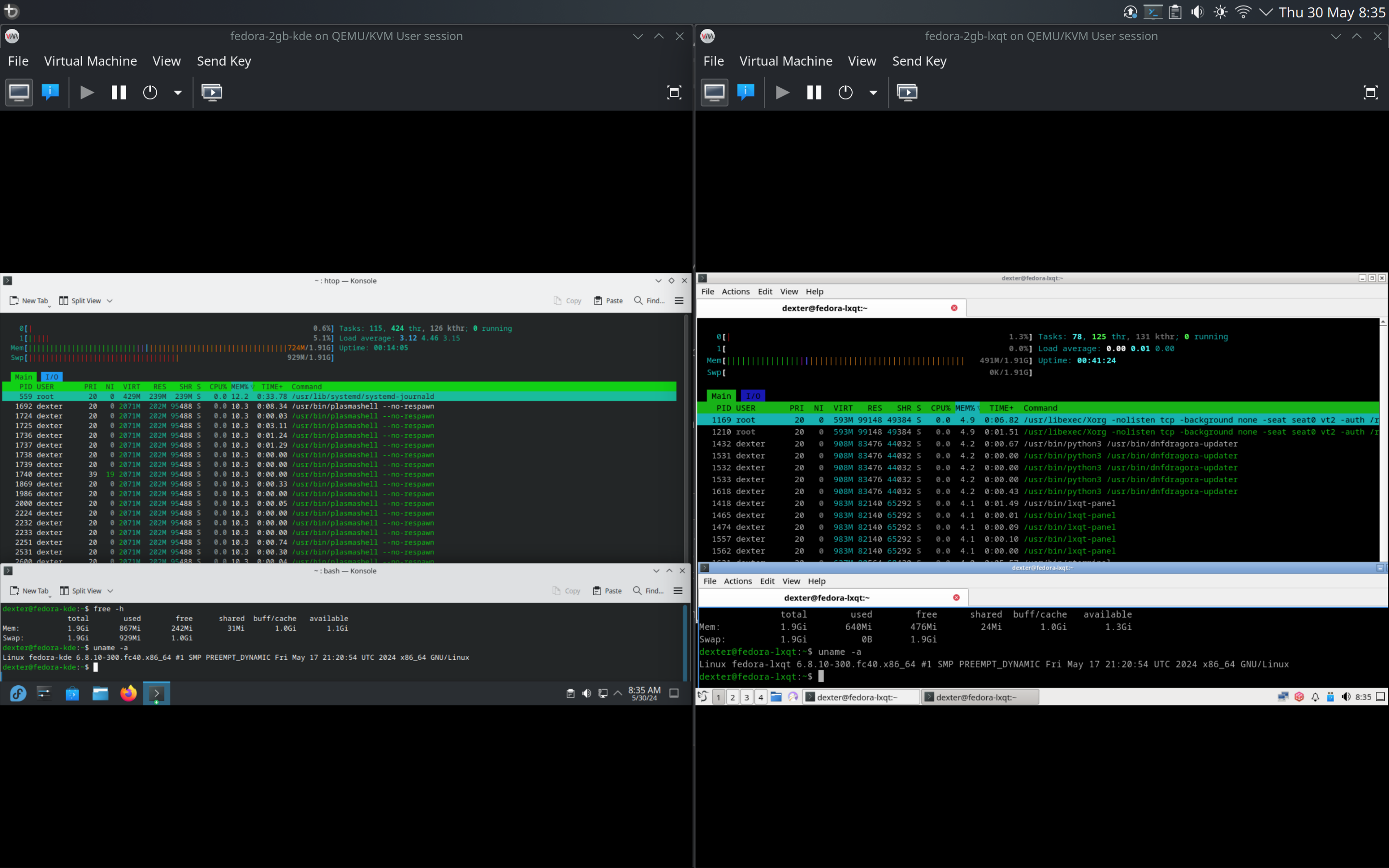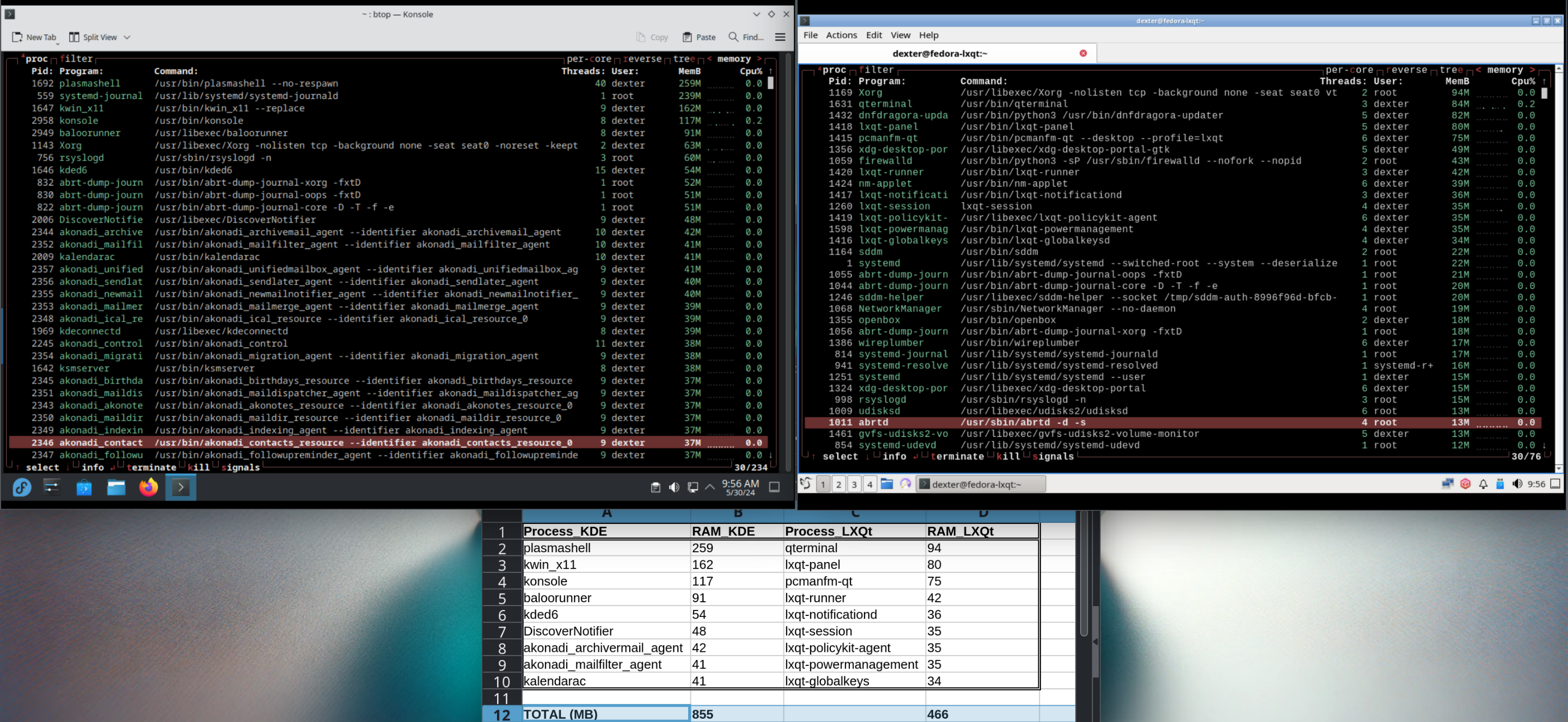Opt out? Opt in? Opt Green!
50% of consumers buy new devices due to unsupported software, while the “tsunami of #eWaste” continues to rise.
#FreeSoftware #OpenSource can keep those devices in use and out of the landfill. Today!
Say hello to the new #KDEEco project “#OptGreen: #SustainableSoftware For Sustainable Hardware”.
https://eco.kde.org/blog/2024-05-29_introducing-ns4nh/
You don’t need new hardware for a secure, up-to-date device; you just need the right software!
@be4foss @kde
As hardware progress continues to slow down, computers last longer and longer. But commerical companies don’t like this, so they introduce arbitrary system requirements. Linux saves the day and you guys are running a good cause.I’m happy I don’t have to throw away my perfectly find 12 year old computer.
Really appreciate everything you and the entire #FOSS community are doing. I’ve used Linux for decades now, and it just keeps getting better. I recently installed Linux on a 10+ year old laptop that was barely running Win10, and it’s back to totally functional, and even snappy! #KDE is of course the best DE ever :)
Fairphone is offering a solution to this by designing devices that are repairable and have guaranteed software updates, though it requires some compromises.
- because the phone is not sealed, its waterproof/dustproof rating is lower
- the specs are lower than other phones in the same price range - this is probably due to the modular design and the need to assure the supply of replacement parts
- the phone is only designed for the EU - it may not support the network bands used in other parts of the world
@NaibofTabr OK, this is awesome. If the company doesn’t go down and holds up to what they promise, the phones are actually not pricey at all - 5 years warranty? 8 years of SW updates? Replaceable parts? All my phones went away because of SW, battery, or display glass. All that can be replaced with Fairphone. I love the concept, thanks for the link! <3
They are not pricey but have the specs of a phone 1/3 the price. But I still find them worth the price.
Because: 1) fairtrade, 2) less revenue from selling you a new device in two years once this one gets obsolete, 3) costs of long-term maintenance, 4) small volumes.
You ever compared a price of fairtrade coffee vs normal one? Yeah, x2. Why? No slave labor, no burned forests, sustainable water usage. But ofc, why would you buy it? It’s double the price.
As I said: they are worth the price. Did you read half my comment and and jumped to mansplain my own phone to me?
Yeah, it’s a good concept and I’d like to see more options like it on the market, but it kind of runs against the current consumer electronics profit model and the way the electronics supply chain is structured.
It does seem like consumer awareness is changing, and there’s more and more demand for sustainable and long-life products. Hopefully that continues. I think “vote with your wallet” applies to this sort of thing.
@edison23 @kde You may find some helpful information from the “Upcycling Android” project from @fsfe
https://fsfe.org/activities/upcyclingandroid/howtoupcycle.en.html
@be4foss @kde @fsfe Thanks for the link. The info there _is_ useful but I don’t think it addresses the main issue with flashing (and thus upcycling with free SW) Android phones - it’s very complicated, risky, and you forfeit the ability to use the phone for banking and such because the apps only support Android/iOS. And yes, I realize it’s not within the powers of the FOSS devs to solve this; I guess they’d have to be EU/US government lol :/
@edison23 @be4foss @kde @fsfe Interesting! Just yesterday, I was contemplating the use of banking apps on mobile devices. Then my thoughts materialized into this: https://freeradical.zone/@jdoe/112519866801858421
Fortunately there are several brands now offering android updates for 5+ years.
Google is also offering 7 years of support
So, are there any plans to reduce the bloat in KDE, maybe even make a lightweight version (like LXQt) that’s suitable for older PCs with limited resources?
I think that what you are calling “KDE” may be “Plasma”, since you are comparing with another desktop environment.
To answer your question, yes, and the process started some years ago. It sounds like you may be a bit out of the loop, as Plasma now weighs more or less the same as XFCE, or thereabouts (these things are harder to measure than one may assume). I personally installed Plasma 6 on a Dell XPS PP25L from 2008 and it works flawlessly.
Edit: Screenshots proving that what you’re saying is not correct:


I’m not talking specifically about Plasma, I’m talking about the “DE” part of KDE in general; and particularly in this context of repurposing and extending the life of old PCs.
I find it a bit ironic for KDE to be pushing this message, when it’s a heavy DE (relatively speaking) - it’s NOT what anyone would have in mind when when selecting a DE for an old PC.
For instance, take LXQt - run the default/recommended file browser, terminal and text editor, and compare it with KDE + equivalents - you’d see a significant difference in resource consumption. On a system with low RAM, that extra bit of free memory makes a big difference, as it could mean avoiding the penalty hit of the swap file, which you’d invariably run into as soon as you fire up a modern Web browser. So it’s vital that the DE use as little resources as possible on such a machine.
I’m afraid you are definitely out of the loop: Plasma is the DE. That is what it’s called: Plasma, not KDE. KDE refers to the organisation, the community and all the software the community produces, which includes Plasma (the DE), but also all the apps, frameworks, widgets, etc.
I find it a bit ironic for KDE to be pushing this message, when it’s a heavy DE (relatively speaking)
You didn’t seem to read my message. Allow me to repeat the gist here: Plasma (the DE) works fluidly on a machine bought in 2008 which comes with an Intel Core 2 Duo running at 1.8GHz. This machine has an onboard Intel GMA X3100 GPU and 2GB Memory. I doubt a heavy/bloated environment like you are imagining would even be able to display the log in screen on that.
I would advise you stop repeating third-hand FUD, as it is not true, and you tried the software out for yourself. I am sure you will be surprised at how light Plasma (the DE) is.
Correct me if I’m wrong, but this #OptGreen project isn’t talking specifically about Plasma, is it? They don’t mention Plasma anywhere on the page they linked.
In any case, that’s irrelevant, also, I don’t doubt that KDE can’t run at all under the specs you mentioned - that’s not the issue. The question is, how much free/usable RAM do you actually have on that machine - let’s say with no apps open first, and with then check again with Konsole + Dolphin + KWrite/Kate open? And for fun, fire up Konqueror as well and check again.
I’m taking about KDE the project.
No you are not. Or you weren’t. Allow me to quote your own post:
I’m talking about the “DE” part of KDE in general;
As the DE is Plasma, that is the part I am addressing. Now you are moving the goalposts. That said, I do not know what you mean when you refer to “the KDE project”, as KDE encompasses many projects.
In any case, I don’t doubt that KDE can’t run at all under the specs you mentioned
So you don’t doubt it is light. Of course if we pile on a bunch of apps, like we could throw in Blender open 50 times rendering 4K animations and I’m sure it will make the laptop run slow. But that would be because of Blender, not the DE.
However, for the sake of argument, I did try the three examples you quoted, Dolphin, Konsole and Kate, and as you can see in the aforementioned video, they are all also very light and worked perfectly simultaneously on the 2008 machine. I do not have Konqueror installed on that machine, as it is not considered an essential part of Plasma anymore and is not widely used.
You’re arguing semantics and that’s not the point I’m trying to argue here. Forget the term “Plasma”. I don’t really care about what the DE is branded as or what’s in “Plasma” the software package. When I say “KDE”, I mean the desktop + all the basic default/recommended apps that you’d see on a typical KDE installation, such as Dolphin, Konsole, Kate, Kalculator, Spectacle etc that’s part of the KDE project. IDK whether the apps I’ve mentioned are considered part of “Plasma” or not, but again, that’s not the point, I’m saying this is what I meant when I said “KDE” - and what most people would expect when they picture a “KDE” environment.
Anyways, I tested this myself on two identical VMs with 2GB RAM, one installed with Fedora 40 KDE, and another with Fedora 40 LXQt, both set to use X11 (because LXQt isn’t Wayland ready yet), both updated and running the latest kernel 6.8.10-300.fc40. I logged into the DEs, opened only two terminal windows and nothing else, ran, and ran
htop. The screenshot speaks for itself:
And when I tried disabling swap on both machines, the KDE machine was practically unusable, with only 53MB RAM remaining before it completely froze on me. Meanwhile, the LXQt one was still very much usable even without swap enabled.
I’d like to see you try running without swap and see how it fares. And if you think it’s unfair disabling swap on a 2GB machine - try installing LXQt yourself, disable swap and see for yourself how much more usable it is compared to KDE.
And this is why I say KDE is bloated and not suitable for old machines.
Edit: Also, check out the memory consumption listed by a user in this post: https://lemmy.nz/comment/9070317
Edit2: Here’s a screenshot of the top 30 processes on my test systems, side-by-side:

Of the above, I calculated the usage of the top 10 processes specific to each respective DE, and you can see that KDE’s memory usage is almost double that of LXQt. Had I counted all the DE-specific processes, it’d no doubt be a lot more than double.
You are moving the goalpost once again. First to be light the DE (i.e. Plasma) had to be light; then the DE had to be light, but not Plasma (?), but your redefinition of DE as in Plasma, plus a random set of apps (Dolphin, Konsole and Kate – none of which are distributed with Plasma, by the way).
As that also proved to be light, now you are basing your argument on (a) a poll (?) and (b) that there is at least one desktop that is lighter and that does not need swap.
I am perfectly willing to admit the latter, mainly because it is true: there ARE DEs lighter than Plasma. But it is a strawman argument, as admitting that does not invalidate the statement that “Plasma is light” and “KDE’S software is not bloated”.
I wish you would stick to one thing and argue in good faith. You seem incapable of that so, I’m done.
Just for my 2 cents, I installed kde on an ancient HP elitebook, and while it was a tad slow to boot from disk due to the hard drive, the daily usage was honestly totally fine, and way better than the windows 7 it came with. You are right that KDE is very light compared to windows, or even in general.
deleted by creator
@d3Xt3r @Bro666 These are, in fact, good examples of how Free Software makes it possible to extend hardware operating life. Though the “Opt Green” project falls under the KDE umbrella, the driving force of the project is that the inherent virtues of FOSS make it possible to support hardware for years and even decades after official support ends. And transparency and user autonomy mean you can contribute to make KDE/FOSS even better! That is simply not possible with proprietary software.
KDE Plasma has been reported to work well on computers up 15 years old, and other FOSS projects run on devices even older than that!
At our stand in April at the Umweltfestival, we had a Dell computer from 2003. Debian with LXQt ran on it, but the BeOS-based Haiku ran even more smoothly … and many KDE apps have been ported to Haiku. So we could demo GCompris to families with kids on a device that is 21 years old.
That is the power of transparency and user autonomy!
Removed by mod
Removed by mod
Thank you for putting so much care into your writing; it really makes a difference! whopper clicker
deleted by creator
Yeah, tell that to the phone companies. I have a perfectly good iPhone 6s that I can only use for the one game that still works. Apple killed that phone for everything else through lack of support. Some for my iPad Mini. My Android phones are all made with flimsy USB connectors that always break and sometimes within literally weeks. The phones are still good but killed by bad USB ports.
For what it’s worth, there’s the Upcycling Android project by the #FSFE.
@Bro666 Dosn’t that need the phone to be unlocked by the provider in order for a new OS to be installed?
Probably. I would imagine they look to help you do that, though.
@Bro666 The annoying thing is most phones would work really well if it wasnt for the flimsy usb and the spyware. Most phones are truly bogged down with it, straight from the Chinese manufacturer
True
The trick with Android phones, I’ve found, is to charge wirelessly whenever you can. Otherwise the USB port does wear out quickly.
@floofloof Yes - if you phone has wireless charging. Most do not. My current phone has an almost totally broken USB port. I’m considering cracking it open to add wireless charging capability. Or I could just find another cheap phone.
@be4foss @kde Do you mind replying to https://diaspodon.fr/@krop/112331009754812504 ?
When will KDE relocate their servers to a country that doesn’t heavily rely on coal for their power production?
Hetzner is getting nearly all of its electricity from hydropower https://www.hetzner.com/unternehmen/umwelt
Edit: wording
@MageInBlack @kde Some background: KDE Eco has funded projects supported by the KDE e.V. and community. The name is derived from the website eco.kde.org, originally created for the FOSS-oriented project “Blauer Engel For FOSS” (BE4FOSS). Since 2021 we’ve been in contact with many FOSS projects/communities as well as people working on measuring software’s energy consumption, digital sustainability, etc. Much is still work in progress and as newsworthy things happen we make sure to post about it.


















